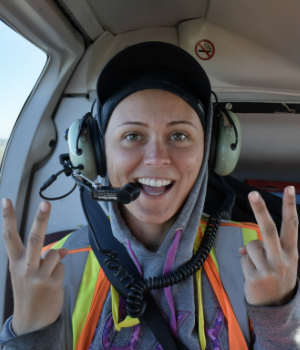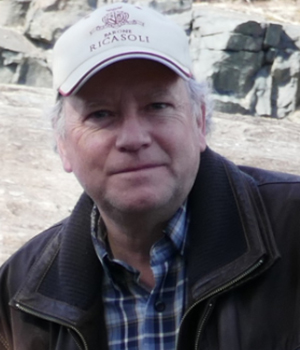The formation of most mineral deposits is linked to the deformation of the Earth’s crust on various space-time scales. Structural controls are very varied in nature and occur at different stages of the metallogenic processes, from the extraction of metals at the source and their transport to their entrapment and remobilization. Several factors determine the nature of these controls: the chronological relationships between tectonics and mineralization, the active or passive role of the deformation in the mobilization, the entrapment of fluids, the crustal level, the rheology, and the type of deposit and mineralizing fluid. Whether magmatic or hydrothermal fluids are involved, structural controls often define prime metallotects on both a regional and very local scale. They are therefore essential exploration vectors that need to be considered during the critical and often complex stage of exploration work. This session will present an overview of these controls’ various contributions to our knowledge and their implications for mineral exploration.
Metallogenesis and Deformation – Structural Vectors for Mineral Exploration
Thursday, November 23, 2023
Room 304AB - ABB



9:05 a.m.
Superposed Tectonics and Syngenetic Mineralization: The Importance of Regional Geology and Geochronology

UQAM
Author: Alain Tremblay (UQAM)
So-called syngenetic mineralizations, mainly represented by volcanogenic massive sulfide (VMS) deposits and SEDEX, are stratiform/stratoid and penecontemporaneous to the formation of the host rocks. In the Phanerozoic series, these mineralizations often form in a suprasubduction context, i.e. in rift, island arc and/or forearc basin environments. The crustal structures commonly associated with this type of mineralization are relatively simple, consisting of a network of normal faults that have allowed the drainage of magmas and/or hydrothermal fluids. However, these syngenetic faults may be folded, faulted and/or reactivated during one or more subsequent orogenic events, which often makes the stratigraphic and structural analysis of these deposits very complex. This presentation features three case studies from Cambro-Ordovician volcanic and sedimentary sequences in the Appalachians of southern Quebec, highlighting the contribution of regional geological mapping and isotope geochronology to this type of problem: (1) the ophiolitic series, with U-Pb ages ranging from c. 505 Ma to c. 480 Ma, which contain Cr, PGE, Ni and Cyprus-type sulphides, and in which the structures associated with their formation in an oceanic environment and their emplacement on the continent are preserved despite the superposition of two subsequent deformation phases; (2) the Ascot Complex, a volcanic arc dated at c. 474-471 Ma, within which all syngenetic structures were strongly obliterated by polyphase deformation and regional metamorphism, and (3) the Magog Group, a synorogenic sedimentary sequence that escaped the deformation associated with the accretion of the preceding series onto the Laurentia margin during the Taconian orogeny. Field relationships and U-Pb and 40Ar/39Ar ages obtained from the ophiolites and volcanic arc indicate that their imbrication and accretion on the Laurentia margin took place over ~15 Ma (between c. 475 Ma and 460 Ma) during the early stages of the Taconian orogeny. All these rocks later recorded, at different intensities, the combined effects of two subsequent orogenic phases, the Salinic (c. 430-420 Ma) and Acadian (c. 380 Ma) phases.
9:35 a.m.
A New Three-Dimensional Lithostructural Model for the Discovery of the Next Deposit in the Old Selbaie Mine Area

SOQUEM
Author: Jean-Daniel Fortin-Rhéaume (SOQUEM)
Holder of a vast territory of claims in the area of the old Selbaie mine (56.9 Mt at 0.87% Cu, 1.85% Zn, 39.0 g/t Ag and 0.55 g/t Au (CONSOREM)), SOQUEM has been active in the region through geophysical surveying and drilling for several years. Initially dedicated to defining the B26 volcanogenic massive sulphide (VMS) deposit, work has recently focused on the highly prospective Wagosic property. The mineralizations of interest, atypical Selbaie-type VMS-epithermal, are intrinsically connected to the formation of synvolcanic faults in an Archean caldera context. These mineralizations can be categorized into three main types. First, at depth in the prospective stratigraphic column, copper-rich hydraulic breccias and veins are found. These are followed by zinc, silver and copper mineralization in the form of veins, veinlets and/or disseminated mineralization. Finally, at the upper level, massive stratiform lenses are observed, mainly composed of pyrite, but locally containing zinc, silver and copper. Construction of the lithostructural model began with a detailed lithostratigraphic interpretation, based on historical geological descriptions and a selection of major and trace elements (Al2O3, TiO2, Nd, Zr and Hf) from which discriminating diagrams were generated. This interpretation was used to produce the base geological layer on which various typical VMS alteration indices were superimposed, derived from the processing of lithogeochemical data using LithoModeleur software (CONSOREM) in accordance with the SV-350°C standard. Geochemical, geophysical and structural components (tracer elements, MAG, EM, PP, regional shears and late faults) were integrated into the lithostratigraphic model to generate the new three-dimensional lithostructural model. In 2023, this vectored exploration strategy helped define the orientation of the VMS-037 zinc lens (2019 discovery, 4.64% Zn, 230.6 g/t Ag and 1.58% Pb over 24.2 m) with a new interception at 3.49% Zn, 73.9 g/t Ag and 0.33% Pb over 40.15 m. Targeting on lithostructural interpretation led to the discovery of the Xylem copper zone, a first on the Wagosic property, with 1.77% Cu, 14.9 g/t Ag and 0.05 g/t Au over 13.8 m, including 6.87% Cu, 55.7 g/t Ag and 0.24 g/t Au over 2.4 m. This type of semi-massive pyrite and chalcopyrite injection within a WAT-type rhyolite is similar to a copper breccia typical of the old Selbaie mine.
10:00 a.m.
Break
10:10 a.m.
The Eagle and Douay Gold Deposits in Northern Abitibi: Two Cases Where the Question of Deformation Arises

UQAM
Author: Michel Gauthier (UQAM)
For many Abitibi gold deposits, the question is often whether they predate or are synchronous with schist deformation. Moreover, in many cases, these deposits are located within alteration zones. The question is always the same: is the deformation zone there because there was a previous alteration zone, or is the alteration zone contemporaneous to the deformation corridor? As for mineralization, is it early or syncinematic? A detailed study of these elements may be required to answer this question. The Eagle-Telbel and Douay deposits will enable us to illustrate how to decipher these situations. This work is of great importance for future drilling campaigns involving these mineralizations.
10:40 a.m.
Polyphase Deformation and Metamorphism of the Amaruq Gold Deposit and Implications for the Exploration of Archean Gold Deposits Within Precambrian Cratons

UQAM, Mines Agnico Eagle
Authors: Manon Valette, Stéphane De Souza (UQAM), Patrick Mercier-Langevin (CGC-Q) and Olivier Côté-Mantha (AEM)
Orogenic gold deposits associated with banded iron formation (BIF) in Archean greenstone belts are a major contributor to Canadian gold production. However, in addition to the complications resulting from their association with structural traps, the morphology of these deposits is often complex, being controlled by the geochemical reactivity, rheology and geometry of the BIFs during the circulation of mineralizing fluids. Over the past 10 years, exploration of orogenic-type gold mineralization associated with BIFs has led to the discovery of new deposits, such as the Amaruq deposit in Nunavut, and the emergence of a new gold-bearing metallogenic province (> 20 Moz) in this part of the Canadian Shield. The Amaruq gold deposit (5.7 Moz) is located in the Neo-Archean greenstone belt of the Woodburn Lake Group of the Rae Craton, in the western part of the Churchill Province. This area was affected by several Archean and Paleoproterozoic orogenies. The deposit is hosted by the Rumble assemblage, characterized by komatiites and basalts of tholeiitic and calc-alkaline affinity. Locally iron-rich clastic, volcaniclastic and chemical sedimentary rocks are also present, creating strong rheological and geochemical contrasts within the volcano-sedimentary sequence. As a result, mineralized zones at the Amaruq deposit can take several forms depending on structural and/or lithological traps: calcosilicate veins, pyrrhotite-rich stratabound replacement zones or several generations of quartz veins. These different styles testify to deformation in the ductile to ductile-breaking regime. Free gold is associated with the presence of arsenopyrite ± löllingite or pyrrhotite. The Amaruq deposit is characterized by pre-pic M2 mineralization that was metamorphosed to amphibolite facies. Superimposed on this is a retrograde event in the upper greenschist facies, whose paragenesis is also associated with the presence of gold. This suggests the possibility of long-lasting hydrothermal activity during a prograde and retrograde metamorphic path or partial remobilization of mineralization. The geometry of the mineralized zones is the result of two main deformation phases, one of Neoarchean age (D2/M2) and the other of Paleoproterozoic age (D3/M3). Amaruq is one of the major discoveries made in Canada over the past 10 years, its genesis and complex tectonometamorphic evolution bearing witness to more than a billion years of history. This work demonstrates the importance of multidisciplinary studies in order to formulate robust exploration vectors and guides.
11:05 a.m.
Structural Geology of the Eeyou Istchee James Bay Area and Associated Mineralizations

JGservices
Authors: Jean Goutier (JGservices), Jérôme Lavoie (MRNF) and Sylvain Trépanier (CONSOREM)
This presentation is largely the result of work carried out for CONSOREM. The Eeyou Istchee James Bay region is lithologically diverse, with ages ranging from 3.5 Ga to 0.55 Ga. This implies the presence of several deformation phases, both Archean and Proterozoic. It is therefore important to identify the deformation episodes associated with mineralization. The major structures were identified from our field observations, satellite imagery, the vertical gradient of the residual magnetic field (low and high resolution), geological polygons, the degree of deformation of geofiche outcrops, planar and linear structural measurements and cross-cutting relationships. The age of the deformation episodes was defined by compiling U-Pb dates.
Some phases are ductile, while others are brittle, particularly those of Proterozoic age. Mesoarchean deformation phases are observed locally, but it is difficult to associate them with specific syntectonic mineralizations. During the Neoarchean period, successive phases of extension and compression favored the emplacement of mineralized intrusions (Cu-Au; Cu-Zn-Ag-Au; Cu-Mo-Au-Ag; Au) or the formation of gold-bearing shear zones. There are several generations of vein systems, the oldest of which are metamorphosed at the amphibolite facies, while others, more recent, are associated with greenschist facies metamorphism.